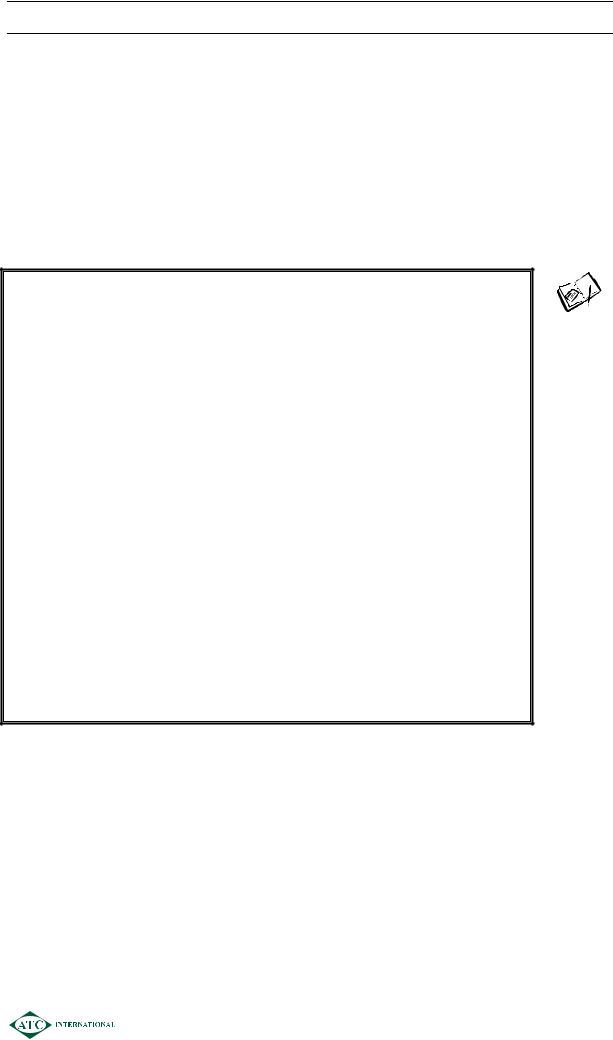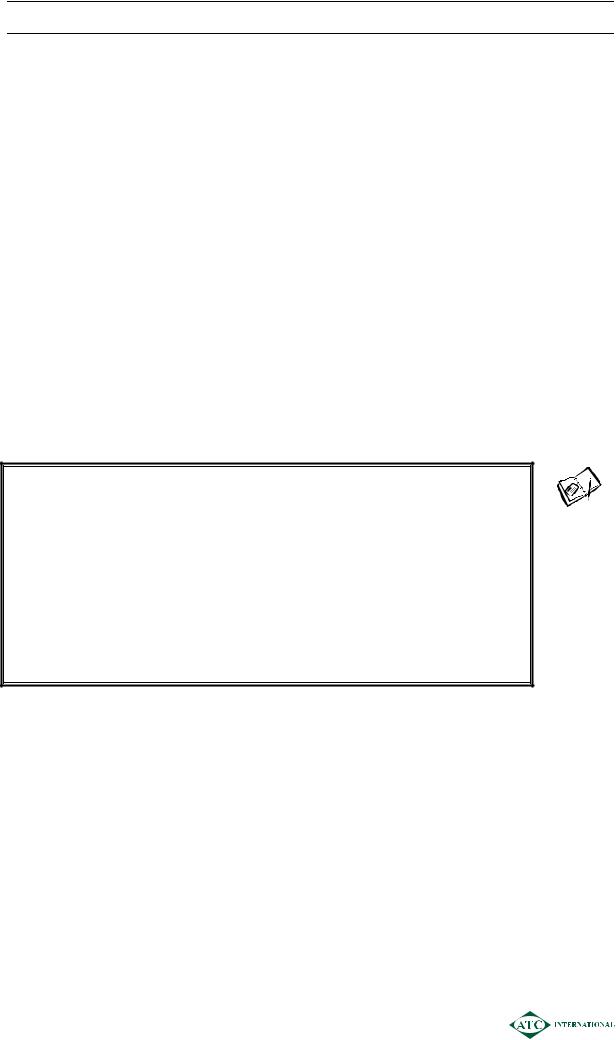
Fin management materials / 5 P4AFM-Session07_j08
.pdf
SESSION 07 – BUSINESS VALUATION 
OVERVIEW
Objective
¾To estimate the value of one share or of a company’s equity in total.
BUSINESS
VALUATION
|
|
|
|
|
|
|
|
ASSET BASED |
|
|
|
VALUE ADDED |
|
|
VALUATIONS |
|
|
|
METHODS |
|
|
|
|
|
|
|
|
|
|
|
|
|
|
|
|
|
|
|
|
|
|
|
|
|
|
RELATIVE |
|
|
|
|
|
|
|
|
|
|
|
|
|
|
|
|
||
|
VALUATION |
|
|
ECONOMIC |
|
|
|
SHAREHOLDER |
|
|
MODELS |
|
|
VALUE ADDED |
|
|
|
VALUE ADDED |
|
|
|
|
|
|
|
|
|
|
|
MARKET
DIVIDEND VALUE ADDED
VALUATION
MODEL
FREE CASH FLOW
VALUATIONS
|
|
|
|
|
|
|
|
FREE CASH |
|
|
|
FREE CASH |
|
|
FLOW TO |
|
|
|
FLOW TO THE |
|
|
EQUITY |
|
|
|
FIRM |
|
|
|
|
|
|
|
|
0701

SESSION 07 – BUSINESS VALUATION
1REASONS FOR BUSINESS VALUATION
¾To determine the value of a private company e.g. for a Management Buy Out (MBO) team;
¾To determine the maximum price to pay when acquiring a listed company e.g. in a merger or takeover – note that quoted share prices are only relevant for minority shareholdings;
¾To place a value on companies joining the stock market i.e. Initial Public Offerings – IPO’s;
¾To value shares in a private company for tax/legal purposes;
¾To value subsidiaries/divisions for possible disposal.
2NATURE OF BUSINESS VALUATION
¾When a business is valued it is not a precise exercise and there is often no unique answer to the question of what it is worth e.g. the value to the existing owner may be significantly different to the value to a potential buyer.
¾There are a variety of different methods of valuing businesses which may produce different overall values. These can be used to determine a range of prices.
¾The relevant range of values is:
the minimum price to current owner is likely to accept
the maximum price the bidder should be prepared to pay
¾The final price will result from negotiations between the parties.
¾The following methods of valuation may be considered:
Asset valuation; where a summary of the assets less the liabilities of the firm are valued upon some agreed basis
Relative valuation; this involves valuing an attribute of the firm, such as its current level of earnings or book value, in terms of the price the market is prepared to pay per dollar of that attribute.
Flow valuations; this identifies a future flow (dividends, free cash flow, or earnings) and converts to a present value. There are three flow-based models:
−Dividend Valuation Model
−Free Cash Flow
−Economic Value Added (EVA™)
0702

SESSION 07 – BUSINESS VALUATION
3ASSET BASED VALUATION METHODS
3.1Net Book Value (NBV)
¾Simply uses the balance sheet equation i.e. Equity = assets - liabilities
¾Problems:
statement of financial position/balance sheet values are often based upon historical cost rather than market values;
net book value of assets depends on depreciation policy;
many key assets are not recorded on the balance sheet e.g. internally generated goodwill.
¾For the above reasons a valuation based upon balance sheet net assets is not likely to be reliable.
3.2Net Realisable Value (NRV)
¾This estimates the liquidation value of the business Equity = estimated net realisable value of assets - liabilities
¾This may represent the minimum price that might be acceptable to the present owner of the business.
¾Problems:
estimating the NRV of assets for which there is no active market e.g. a specialist item of equipment;
ignores unrecorded assets such as internally generated goodwill.
3.3Replacement cost
¾This can be viewed as the cost of setting up an identical business from nothing Equity = estimated depreciated replacement cost of net assets
¾This may represent the maximum price a buyer might be prepared to pay.
¾Problems:
technological change means it is often difficult to find comparable assets for the purposes of valuation ;
ignores unrecorded assets.
0703

SESSION 07 – BUSINESS VALUATION
3.4“Book value-plus”
¾Even using replacement cost suffers the problem of ignoring unrecorded assets such as goodwill
¾A possible solution is to use one the of formulae below:
Equity Value = replacement cost of net assets + (m × annual profits) Equity Value = replacement cost of net assets + (m × annual turnover)
¾The factor m is agreed by negotiation and is designed to compensate the seller for the value of the business goodwill
¾This method of valuation is often used in practice to place a value on a small business.
4RELATIVE VALUATION MODELS
4.1Price/Earnings multiples
The published P/E ratio of a quoted company takes into account the expected growth rate of that company i.e. it reflects the market’s expectations for the business.
Using published P/E ratios as a basis for valuing unquoted companies may indicate an acceptable price to the seller of the shares.
Price/Earnings (P/E) ratio |
= |
|
Market priceper ordinaryshare |
|
|
EarningsPer Share |
|||
|
|
|
||
Earnings per Share (EPS) |
= |
|
Profit after tax andpreferencedividends |
|
|
|
|
||
|
Number of issued ordinary shares |
|||
|
|
|
||
Therefore: |
|
|
|
|
Ordinary share price |
= |
P/E ratio × EPS |
||
This can be used for valuing the shares in an unquoted company.
Step 1 Select the P/E ratio of a similar quoted company.
Step 2 Adjust downwards to reflect the additional risk of an unquoted company and the non-marketability of unquoted shares.
Step 3 Determine the maintainable earnings to use for EPS.
0704

SESSION 07 – BUSINESS VALUATION
4.2Earnings Yield
¾Earnings yield is simply the reciprocal of the P/E ratio.
Earnings Yield |
= |
EPS |
× 100 |
|
Market priceper share |
||||
Therefore: |
|
|
|
|
Ordinary share price |
= |
EPS |
|
|
Earnings Yield |
|
|||
|
|
|
||
Example 1
You are given the following information regarding Accrington Ltd, an unquoted company.
(a)Issued ordinary share capital is 400,000 25c shares.
(b)Extract from income statement for the year ended 31 July 19X4.
|
|
$ |
$ |
Profit before taxation |
|
260,000 |
|
Less |
Corporation tax |
|
(120,000) |
|
|
|
________ |
Profit after taxation |
|
140,000 |
|
Less |
Preference dividend |
20,000 |
|
|
Ordinary dividend |
36,000 |
|
|
|
______ |
(56,000) |
|
|
|
________ |
Retained profit for year |
|
84,000 |
|
|
|
|
________ |
(c) The P/E ratio suitable for an unquoted company in this sector is 12.5.
Value 200,000 ordinary shares in Accrington Ltd on an earnings basis.
Solution
0705

SESSION 07 – BUSINESS VALUATION
4.3Dividend yield
Dividend yield |
= |
Dividend per share |
× 100 |
||
Market pricepreshare |
|||||
|
|
|
|||
Therefore share price |
= |
Dividend per share |
|
||
|
|
|
|||
Dividend yield |
|
||||
|
|
|
|||
Step 1 Determine the dividend for the unquoted company
Step 2 Choose a published dividend yield for a similar quoted company
Step 3 Adjust this dividend yield upwards to reflect the greater risk of an unquoted company and the non-marketability of unquoted company shares.
¾This method fails to take growth in to account and therefore can lead to an undervaluation
¾It also has little relevance for valuing a majority shareholding as such an investor has the ability to change the dividend policy.
Example 2
An individual is considering the purchase of 2,000 shares in G Ltd.
G Ltd has 50,000 shares in issue and the latest dividend payment was 12 cents per share.
G Ltd is similar in type of business, size and gearing to H plc. H plc has a published dividend yield of 10%.
Suggest a price that the individual might pay for the 2,000 shares in G Ltd.
Solution
0706

SESSION 07 – BUSINESS VALUATION
4.4Tobin’s Q
¾This ratio was proposed by the Nobel prize winning economist James Tobin in 1969.
¾The ratio can be presented in various formats:
Q = |
|
Total market capitalsation of the firm |
|
|
Replacement cost of the firm'sassets |
||
|
|
||
= |
Total market capitalsation of the firm - market value of debt |
||
|
Replacement cost of the firm'sassets -debt |
||
|
|
||
=Market value of equity Net worth of the firm
¾The long-run equilibrium for this ratio = 1
¾Although Tobin’s Q may be a useful measure to determine whether an entire stock market is over or undervalued its use at an individual company level is more questionable for the following reasons:
assets in firms acquire value not because they are held in isolation but because they are held together within a network i.e. the replacement cost of the firm is not the sum of its parts.
many of a firm’s assets do not trade in liquid markets and it is difficult to establish their replacement cost e.g. fixed assets in use.
¾Therefore in practice the application of Tobin’s Q often relies upon the use of accounting information as a proxy for replacement cost. This leads to the more measurable Market to Book ratio.
4.5Market to Book ratio
¾This is a pragmatic interpretation of Tobin’s Q.
¾ Market to Book ratio = |
market value of equity |
|
net book value uf the firm |
||
|
¾This can also be referred to as the Price to Book ratio.
¾The ratio assumes that there is a consistent relationship between market and book values i.e. the market prices one dollar of book value in one firm the same as in another
¾Therefore the ratio would appear to be useful in the relative valuation of companies and it is indeed popular with market analysts.
¾However there can be problems in identifying an appropriate benchmark for a specific company.
0707

SESSION 07 – BUSINESS VALUATION
5DIVIDEND VALUATION MODEL
¾If dividends are expected to remain constant e.g. on preference shares:
Po |
= |
D |
|
|
re |
||||
|
|
|||
Where |
P0 = today’s share price |
|||
|
D = dividend per share |
|||
|
re = required return of equity investors |
|||
¾If dividends are forecast to grow at a constant rate in perpetuity
Po =
where
D0(1 + g) |
= |
D1 |
|
re −g |
re −g |
||
|
Do = most recent dividend D1 = dividend in one year
g = growth rate
Step 1 Determine current dividend and estimated growth rate
Step 2 Determine the required return − for example by using the Capital Asset Pricing Model (CAPM) on a similar quoted company and then adjusting upwards to reflect greater risk/lack of marketability of unquoted shares
¾Problems:
determining growth rate of dividends;
determining appropriate required return for unquoted company;
dealing with companies that do not pay dividends yet;
dealing with the trend for share repurchase schemes rather than traditional dividends;
little relevance for valuing a majority shareholding as such an investor has the ability to change the dividend policy.
¾Some of these problems can be resolved by using Free Cash Flow models.
0708

SESSION 07 – BUSINESS VALUATION
Example 3
Claygrow Ltd is a company which manufactures flower pots. The following data are available.
Current dividend |
25c per share |
Required return on equities in this risk class |
20% |
Value one share in Claygrow Ltd under the following circumstances.
(i)No growth in dividends
(ii)Constant dividend growth of 5% per annum
(iii)Constant dividends for fiveyears and then growthof 5% per annum to perpetuity
(iv)Constant dividends for five years and then sale of the share for $2.00.
Solution
0709

SESSION 07 – BUSINESS VALUATION
6FREE CASH FLOW METHODS
6.1Introduction
¾The value of company is the present value of its estimated future cash flows
¾In theory this is the best method of valuation and is sometimes known as fundamental valuation.
¾Problems:
estimating the future cash flows – particularly complex in mergers and acquisitions due to synergy;
determining an appropriate discount rate taking into account the level of business risk and financial gearing;
determining an appropriate time horizon for cash flows.
¾There are two versions of the model, derived from two alternative definitions of Free Cash Flow.
6.2 |
Free Cash Flow to Equity (FCFE) |
|
Net profit |
x |
|
Add: depreciation, amortisation and other non-cash charges |
x |
|
Deduct: capital expenditure |
(x) |
|
Increase/decrease in working capital |
(x)/x |
|
Deduct: debt principal repayments |
(x) |
|
Add: new debt raised |
x |
|
|
|
___ |
FCFE |
|
x |
|
|
___ |
¾FCFE represents the surplus cash flow generated for shareholders i.e. the potential dividend. More specifically this is known as the post reinvestment FCFE as capital expenditure is deducted.
¾Theoretically FCFE should be forecast from year one to year infinity. In practice a detailed forecast may be performed for several years and then an assumption made about a sustainable growth rate to perpetuity.
¾FCFE should be discounted to present value at the required return of shareholders i.e. the cost of equity geared.
¾Present value of FCFE discounted at keg = theoretical total value of equity.
0710
